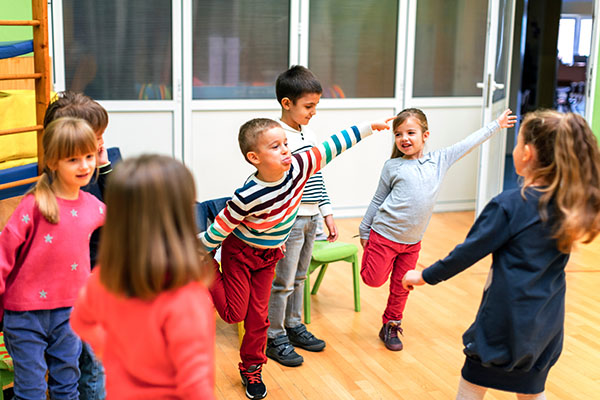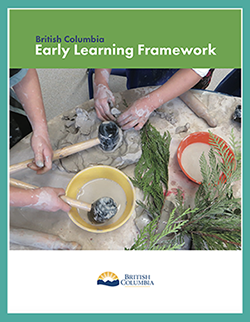
Module 5: Living Inquiries – Communication and Literacies
Sound and Word Play
Educators recognize the sounds children make as forms of communication and provide opportunities for children to explore and play with sounds and words.
Critically Reflective Questions
- How do I respond to the sounds that infants make?
- For example, their squeals, growls, grunts, and babbling
- How do I respond to the sounds non-verbal children make?
- In what way do I show that I recognize these sounds as forms of oral communication?
- In what ways are children exposed to a wide range of singing and speaking voices, and in a variety of contexts?
- Sounds can be a source of delight and enjoyment
- How can I enhance this?
- For example, rhymes, alliteration, poems, chants, songs, and dances
- In what ways do I encourage children to explore their sense of rhythm and melody?
- For example, through listening, singing, and dancing in a variety of musical styles
Case Study: Sound and word play
In a kindergarten classroom, the educator invites a musician from their nearby community music school to introduce the children to a range of songs and speaking voices. The musician brings playful instruments, including shakers, rattles, bells, tambourines, and maracas. The children are encouraged to explore sound through singing, moving, listening, and playing the instruments.
Reflective Questions
How might you promote opportunities for children to explore and play with sounds and words?
In what ways are children exposed to a wide range of singing and speaking voices, and in a variety of contexts?

